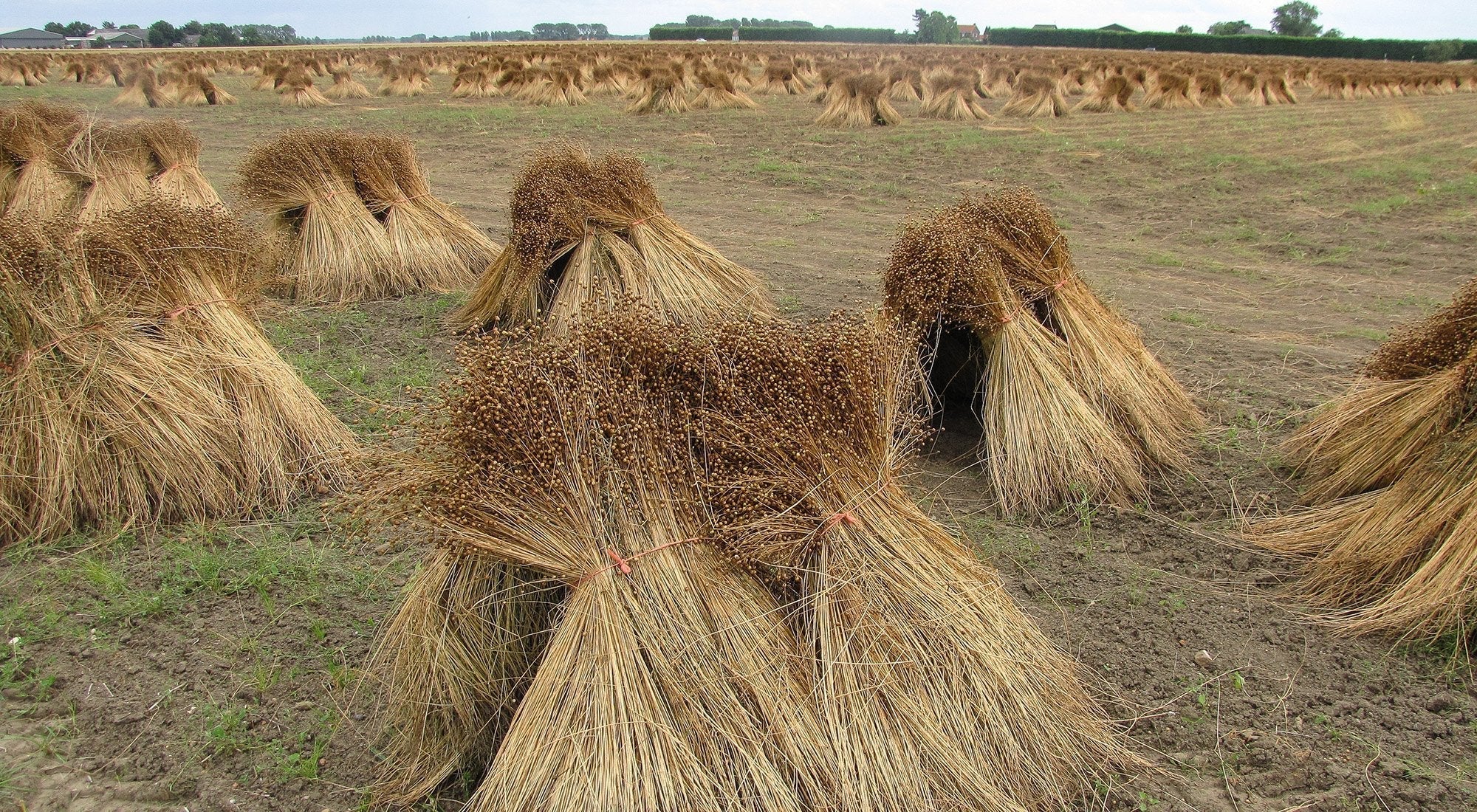As soon as the sun is burning, we feel the need to protect our skin. Even better if we can do it in a way, that cools us down instead of heating us even more. There is no better fabric for this purpose than linen. This fabric seems to be a real superhero! Let’s have a closer look at the raw material that our linen shirts are made of.
The best shirt material for hot days
It's common knowledge: no other fabric is better suited to absorb moisture and exchange it with the surrounding air than linen. It is breathable, moisture-regulating, and therefore cools us down in summer. At the same time, it has an antibacterial effect on the skin, making it less prone to developing an odor. Linen fabrics are also particularly tear-resistant, which is why clothes made of linen are hard-wearing and durable (if they are cared for properly, which we will come to later). Stains are easy to remove. For this reason, linen doesn't have to be laundered at a high temperature, like other fabrics, for effective cleaning. In addition, compared to many other types of fabric, linen fabrics are lint-free.
Therefore it’s not surprising, that linen has already been used 7000 years ago in Egypt, Mesopotamia, and Phoenicia. Egyptian mummies were wrapped in linen cloth and the oldest known woven garment is a linen shirt from a 5000-year-old Egyptian necropolis. It was found by a British archaeologist over 100 years ago, but it was only through modern radiocarbon technology, that the exact age could be dated in the late 1970s. From Greek and Roman antiquity to the European Middle Ages, linen was the material for clothing alongside wool. With the increasing industrialization in the 19th century, cotton became more important and linen was used less often. However, the fashion industry's interest in this material has grown in recent years because of its qualities.
Proper care is important
Few reasons speak against linen. On one hand, linen wrinkles more easily than cotton. This is why we often associate linen shirts with a more casual look, rather than with a perfectly pressed business shirt. Yet, these wrinkles are quickly forgotten. The linen shirt reminds us of summer, leisure, and pleasure. Who minds these wrinkles when you are sipping your drink at the beach or when you are strolling through the lively city on a mild summer evening?
A linen shirt can last very long when cared for properly. In general, linen is less resistant to abrasion than other materials. That means it reacts more sensitively to friction. The less a linen shirt is washed and ironed, the better. If it has been worn only a few times, it's often more than enough, to hang it outside to freshen it up. When washing a linen shirt, it should always be at a reduced spin cycle. Air-drying your linen shirt works the best and is a lot less damaging than tumble-drying it. Linen shirts can be ironed at a high temperature, but should always be moistened. Therefore, it is best to iron the linen shirt when it is still damp. This puts less strain on the fabric.
A natural product
Linen is more expensive to produce than many other fabrics because processing the flax fiber from which linen fabrics are made, is quite labor-intensive. Linen is harvested in numerous steps and the flax straw is processed for fiber production. Among other things, one by-product of this process is flax seeds which are often part of a healthy diet.
Northern France, Belgium, and the Netherlands offer optimal climatic conditions for growing linen. It is also grown in Poland, Romania, Russia, and China. Linen naturally needs fewer artificial fertilizers and pesticides. It is a raw material that is less susceptible to pests than cotton. However, herbicides, fungicides, insecticides, and growth regulators can also be used in conventional cultivation.
Organic linen shirts from CARPASUS
The CARPASUS linen shirts are made from GOTS-certified fabrics. That means that the cultivation and processing of the raw material must adhere to ecological and social standards. No pesticides or mineral fertilizers are used to grow the raw material. We only use certified organic raw materials to produce our shirts. We believe that only this approach is truly sustainable, as it protects nature and people from toxic chemicals and soils from extensive overuse.
The supply of organically grown linen is still very limited on the world market. For example, only very small quantities of organically grown linen from Europe are currently available. Most European raw material suppliers rely on the conventional cultivation of linen. However, the supply of organic linen is now slowly increasing with the growing awareness of sustainably produced clothing. The organic linen for our current linen shirts collection comes from Normandy as well as from China. Our Portuguese weaving mill buys organic linen yarns, dyes, and weaves them, and delivers GOTS-certified fabrics to our sewing partners in the north of Porto. In Porto, the fabrics are cut, trimmed, and sewn with the greatest care to finally become linen shirts.
We now offer a wide range of different linen shirts in long and short sleeves, plain and stripe designs. Have a look and discover our range of linen shirts in our online shop!



